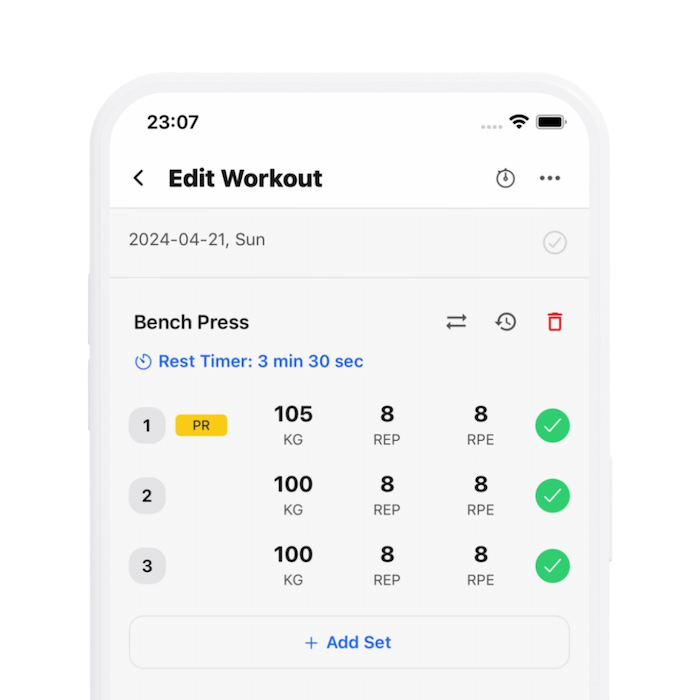30 Seconds SummaryResearch Spotlight: Low-load squat training with blood flow restriction causes as much hypertrophy as high-load training in experienced squatters
- A recent study compared low-load squat training with blood flow restriction (BFR) to high-load training in terms of strength gains and muscle growth over nine weeks among trained individuals.
- Participants trained three times a week with variations including squats, leg presses, knee extensions, and Bulgarian split squats.
- The high-load group trained with approximately 75% of their 1 Rep Max (1RM), while the low-load BFR group used about 30% 1RM, employing a specific set and rep protocol with shorter rest periods.
- Results showed significant increases in squat 1RM for both groups, though greater increases were observed in the high-load group (+19kg) compared to the low-load BFR group (+9kg).
- Both training approaches led to similar increases in quadriceps size and type II muscle fiber size; type I fiber size did not significantly change in either group.
- The study challenges the notion that low-load BFR training enhances type I fiber hypertrophy exclusively, a finding previously noted only in powerlifters.
- Despite low-load BFR training being further from failure, it still promoted comparable quadriceps hypertrophy to high-load training.
- The findings suggest low-load BFR training can maintain or even build strength, making it beneficial for those unable to train with heavy loads temporarily, such as during injury recovery.
Stronger By Science
Greg Nuckols
